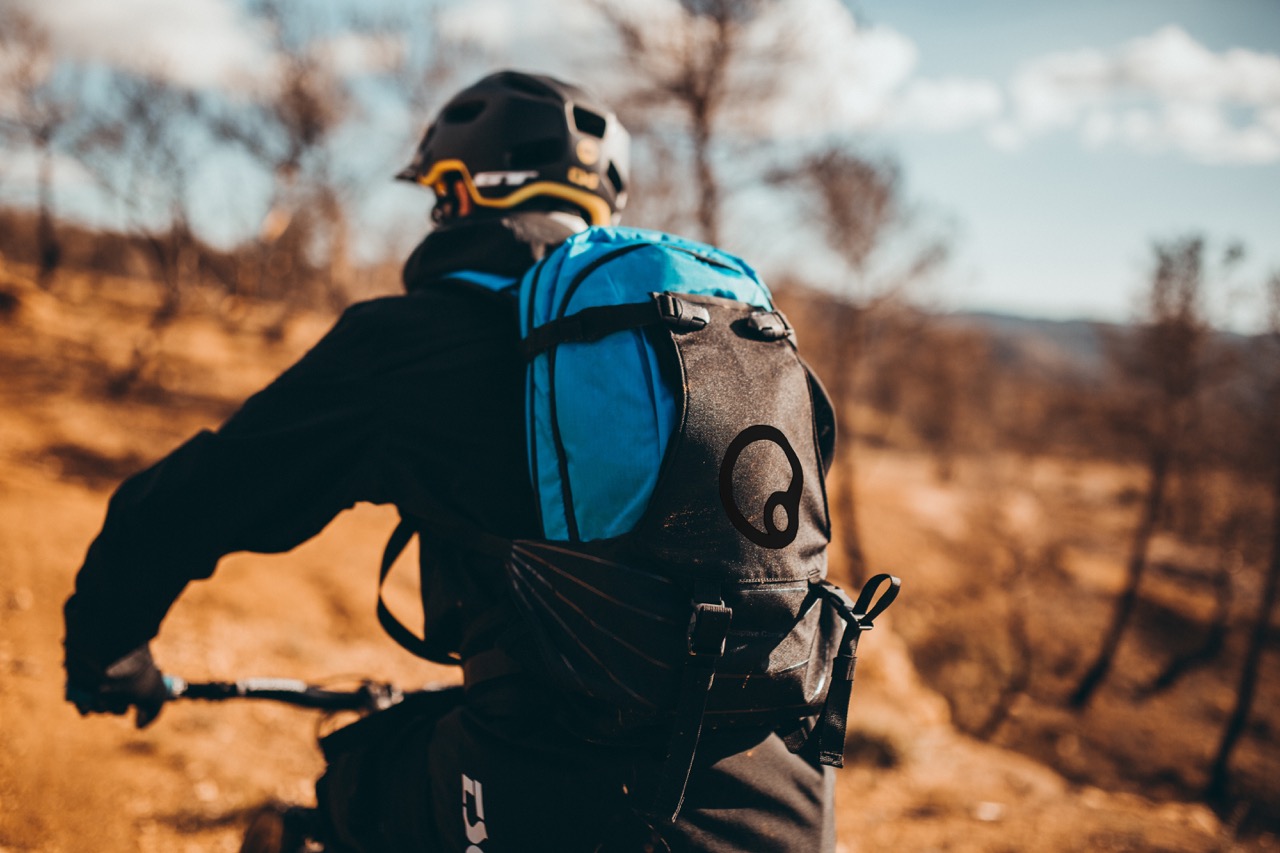Shoulder Pain While Cycling - Causes and Measures

Many cyclists complain about shoulder pain. We explain the reasons and offer the best expert tips to counteract it!
Shoulder Pain While Cycling
Shoulder pain after cycling is mainly suspected among ambitious mountain bikers who must absorb hundreds of hard blows from the handlebars with pure arm strength and the upper body during downhill riding. Riders of trekking bikes with their more upright seating position are not usually considered here. Wrongly so. Whether you feel shoulder problems during or after cycling is less about the type of bike and more about the seating position, the corresponding pressure on arms and hands, the length and type of routes covered, the training condition of the muscles in the shoulder area, and finally, the clothing. It is essential to distinguish which symptoms originate from everyday life and only appear when cycling and which pains originate from cycling. Complaints that are purely due to cycling can mostly be eliminated.
Why do I have tension in my shoulders and neck after cycling?
A healthy shoulder should withstand several hours on the bike without complaints and overload – if the bike is optimally adjusted to the person! And this means much more than just the saddle height. The shoulder joint is often equated with the ball joint in the hip, but despite its mobility in every direction, it is significantly different in structure. The head of the shoulder joint is not surrounded by a socket but is pulled against an undersized, slightly curved surface. It looks somewhat like a basketball rotating on a saucer.
This design allows maximum freedom of movement to the upper body in all directions, including rotation in the joint. However, this construct is also quite fragile, as some strong ligaments and the surrounding muscles or tendons only hold the joint head on the sliding surface. Depending on their training condition, a shoulder can quickly become unstable. The less muscle mass and muscle tension secure the joint, the more susceptible it is to pain and injuries. Women, with generally less muscle mass, need to pay even more attention to their training condition. At the same time, these muscles around the joint are very different and intense, and depending on the arm position, very thin muscle bundles must exert high force. This partial overload is the reason for many shoulder problems.
In most cases, the upper arm head is pressed against the shoulder roof without sufficient holding forces, pinching tendons, the bursa, and even muscles and nerves. This narrowing is quite well known as impingement syndrome. Raising the arm from the horizontal becomes very painful at the latest. Stretching and strengthening exercises create more space here again. Jumping rope with weighted handles has proven itself here, among other things.

Achieving Pain-Free Cycling with Ergonomics
Especially for longer or rougher days in the bike saddle, it is logical to use the strong and enduring parts of the shoulder muscles. This happens almost automatically in an ergonomically well-adjusted seating position, so you don't have to constantly pay attention to your posture or the position of the joints. The body posture does not change significantly on a poorly adjusted bike, possibly even in the wrong frame size and with an incorrect handlebar setup and non-ergonomic saddle height. Still, arms, legs, wrists, knees, and pelvis no longer work at optimal, efficient angles. An example to illustrate this would be the classic rounded back with too small a distance to the handlebars. It is hardly noticeable visually but causes immense neck pain over time.
The same applies to the shoulder. If the arms form a right angle to the upper body and the hands grip the handlebars slightly wider than shoulder-width, the triceps muscle on the back of the upper arm, the latissimus dorsi from the shoulder along the side of the ribcage, and the large pectoral muscle (musculus pectoralis major) bear most of the load. This is the optimal position as the largest and strongest muscle involved in movements in the shoulder joint. This also applies to absorbing blows from the front wheel. The pectoralis can unfold its full effect when the elbows point outwards. You should rotate the arms outwards by 80 or 90 degrees to optimally use the shoulder whenever great holding force is required.
EXPERIMENT: To experience for yourself how the efficiency of joint angles decreases, Go into the push-up position alternatively also, with the knees/kneecaps instead of the feet on the floor, place the hands slightly wider than shoulder-width apart, the stretched arms form a 90-degree angle to the torso when viewed from the side. Now, carefully push the body slowly forward over the hands, and the stabilization in the shoulder becomes noticeably harder. The effect is similar when shifted towards the feet. Also, turning the elbows towards the feet and 90 degrees to the side will make you feel the difference immediately.

Shoulder Pain Due to Incorrect Posture While Biking
The seating position and posture sound similar but mean something different. The former has to do with the bike's settings, while you can influence your posture while riding with this setup. The number one posture mistake on the bike is locked elbows (article on elbow pain). The arms serve the body as additional shock absorbers while cycling. But the force goes straight to the shoulders if the forearm and upper arm are perpendicular. As mentioned, only muscle strands and ligaments have to absorb this shock unfiltered.
The shoulder ligaments do not run parallel from the arm to the shoulder blade and shoulder blade height, where the small socket is located. The shoulder ligaments are wound around the joint as a so-called rotator cuff. The higher you raise the arm, the less diagonal and thus stable the cuff runs. Athletes on a racing bike and triathletes, who sometimes have very stretched positions on the aero bars, should avoid hard blows from the front wheel even more.
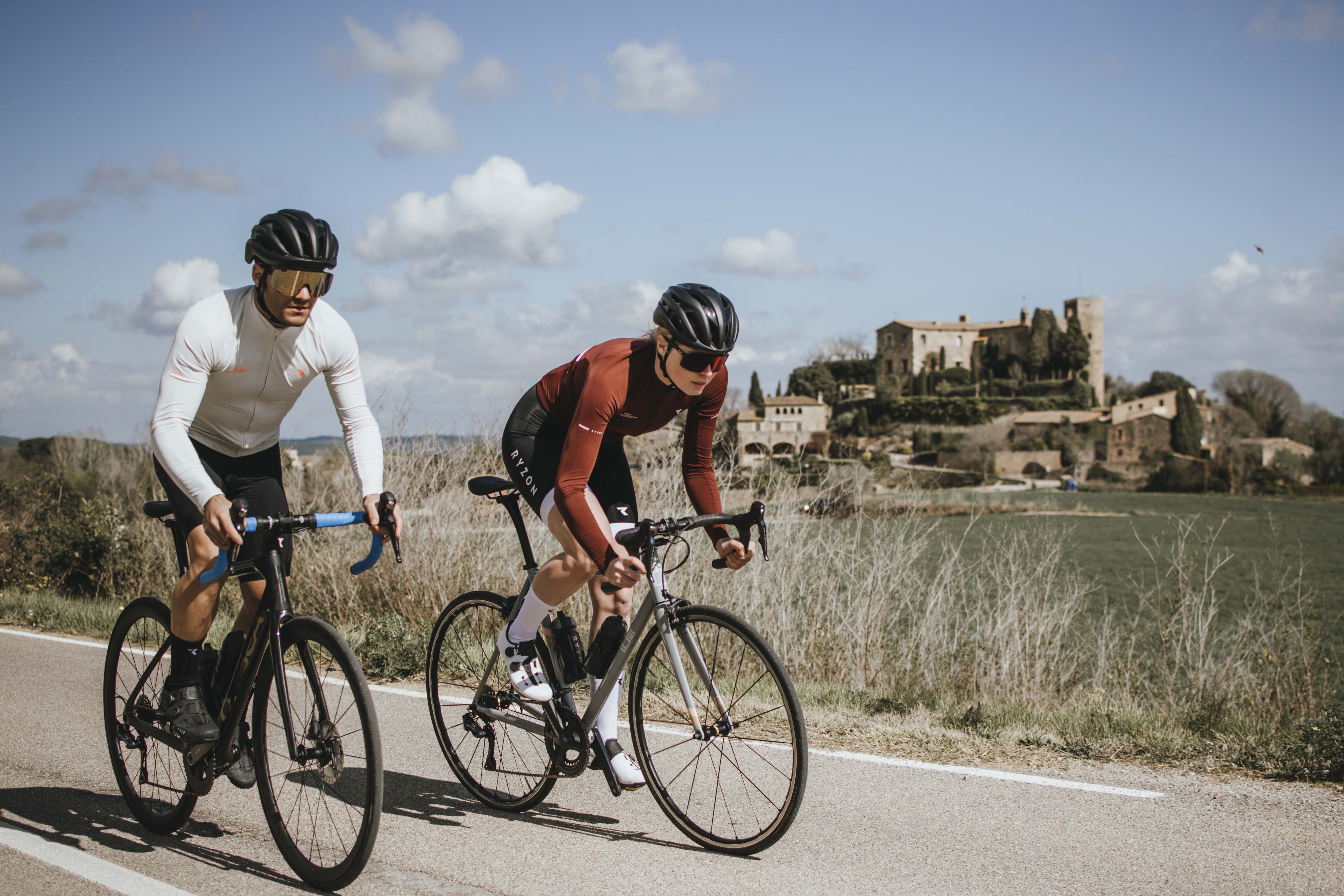
Suitable Clothing Prevents Shoulder Problems on the Bike
This is true. Especially on routes with climbs and descents, phases of sweating and drafts alternate. Notably, the shoulders exposed to the wind cool down very quickly. Moreover, it is an involuntary reaction of the body to raise the shoulders when freezing. This is done, among other things, by the part of the large trapezius muscle that runs visibly downwards from the neck. Cooled down by the wind and overstrained to the point of cramping from continuous lifting, this muscle generally hurts first. Countermeasures are quickly drying cycling clothing made of synthetic fibers and, if necessary, putting on a windbreaker on every descent. If this is not possible or not enough, you can consciously force yourself not to cramp up because of the cold on the descent. You also do this when completely different body parts freeze that do not affect the shoulders themselves.
TIP: Jackets that are too tight and poorly fitting, as well as heavy backpacks, can also trigger the involuntary continuous raising of the shoulders.

What helps with shoulder pain on longer bike rides?
The shoulder is quite an extensive area. It consists not only of the joint that moves the upper arm but also of the shoulder blade, its purely muscular connection to the torso, and the muscle strands that radiate to the middle of the back, laterally along the ribs, and into the cervical spine. Therefore, the possible causes of pain in the entire shoulder area are very diverse. To avoid being too extensive, here are the less likely reasons or tips in brief form:
Hand Position: Sometimes, by twisting the handlebars, the situation arises where the grips point upwards from the thumb outwards. The resulting internal rotation in the arms often causes cyclists to pull and hold their shoulders towards their ears, as described above. The hand position should be horizontal to downward.

Handlebar Width: As mentioned, the biomechanically ideal support width is shoulder width plus about a hand's width on each side. Extreme off-road trails or downhills require more steering force and, thus, more leverage through significantly wider handlebars. However, widths over 60 to sometimes 80 centimeters are again less favorable for gripping (very wide push-up). So, only those needing extra leverage to hold the handlebars should grip wider than 60 centimeters. The drop bars on road and gravel bikes are only between 38 and 46 centimeters wide. Thus, it is ergonomically sound, but the hands are rotated 90 degrees in the standard position (thumbs in the direction of travel). This brings the elbows to the body and the shoulder into less optimal function. At least hard blows from the front wheel should be absorbed with actively rotated arms—more info on this.
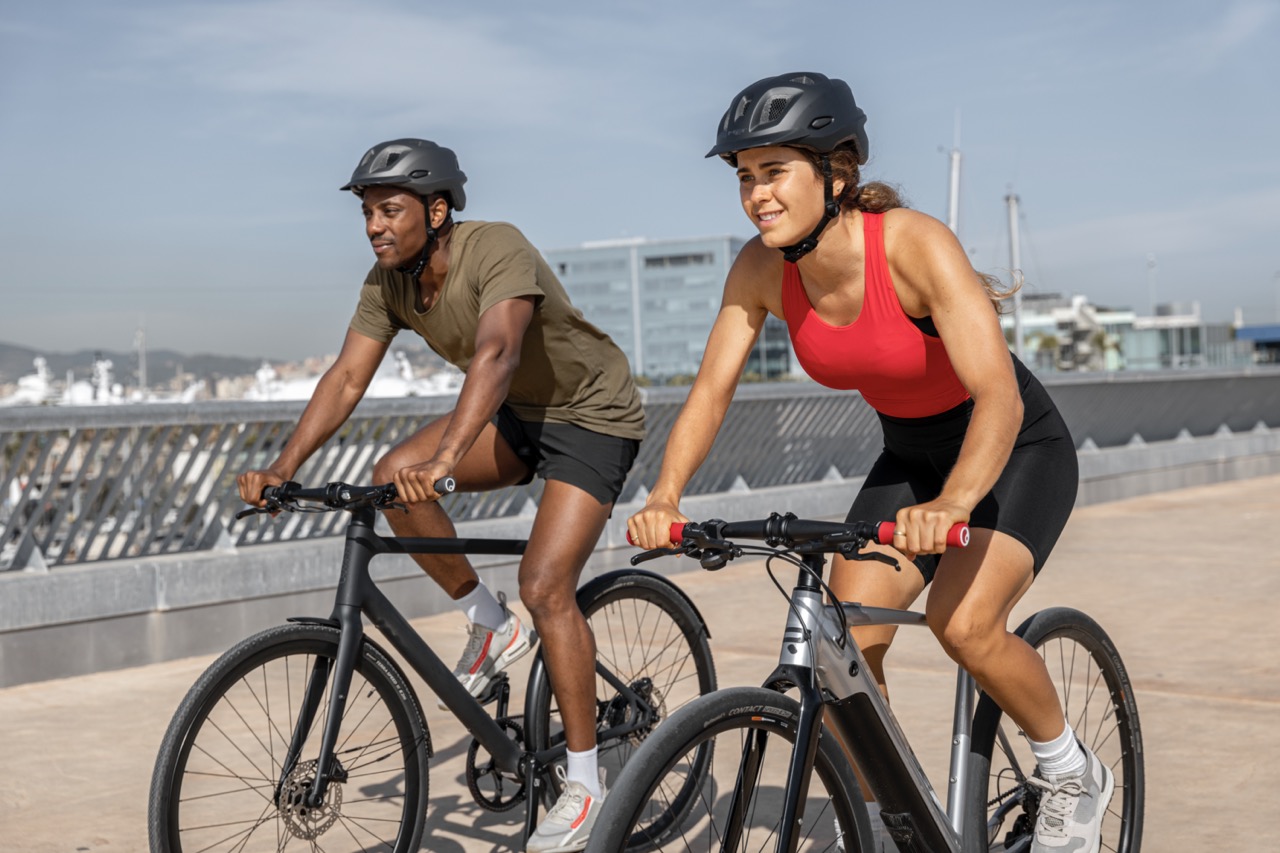
Upper Body Inclination: The higher the handlebars, the gentler the body posture. Unfortunately, this is not true, and the exaggeration up to the reclined position is incredibly counterproductive. If the handlebars are mounted very high, the same effect occurs as with the upward-facing grips. Those who do not support themselves on the handlebars but instead hang on them often also pull their shoulders up and feel it over time.
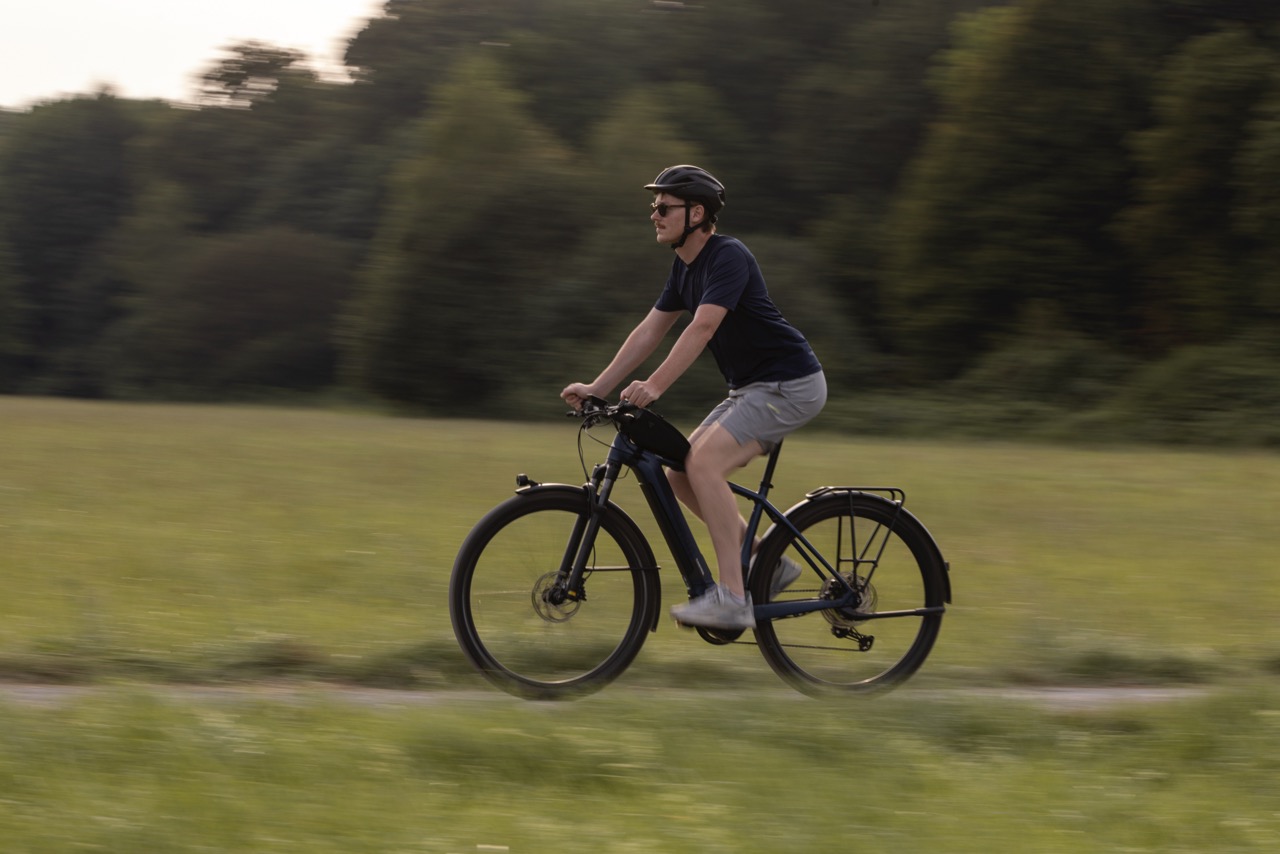
Handlebar Shape: Those who do not pull their shoulders up on bikes with flat bars but push them forward permanently usually compensate for a too-stretched seating position with an additionally quite wide hand position. This leads to earlier shoulder fatigue. A quick solution is handlebars with moderate backsweep, i.e., a bend backward. The arms thus support further wide and with a long lever for steering, but they take a more practical angle to the upper body, and the distance of the grips to the saddle is slightly reduced.

Seating Position: If the seating length, i.e., the distance between the grips and the saddle, is too short, one quickly falls into a hunched back. The curved thoracic spine bends forward, and one inevitably leans over the handlebars and hands. Small shoulder muscles have to rotate the arm forward and upward to counteract the tendency to tip over the handlebars, essentially counteracting. This usually results in a burning sensation in the shoulders and neck. A more considerable seating length, resulting from a more significant setback and/or a longer stem, can help here—more info on this.
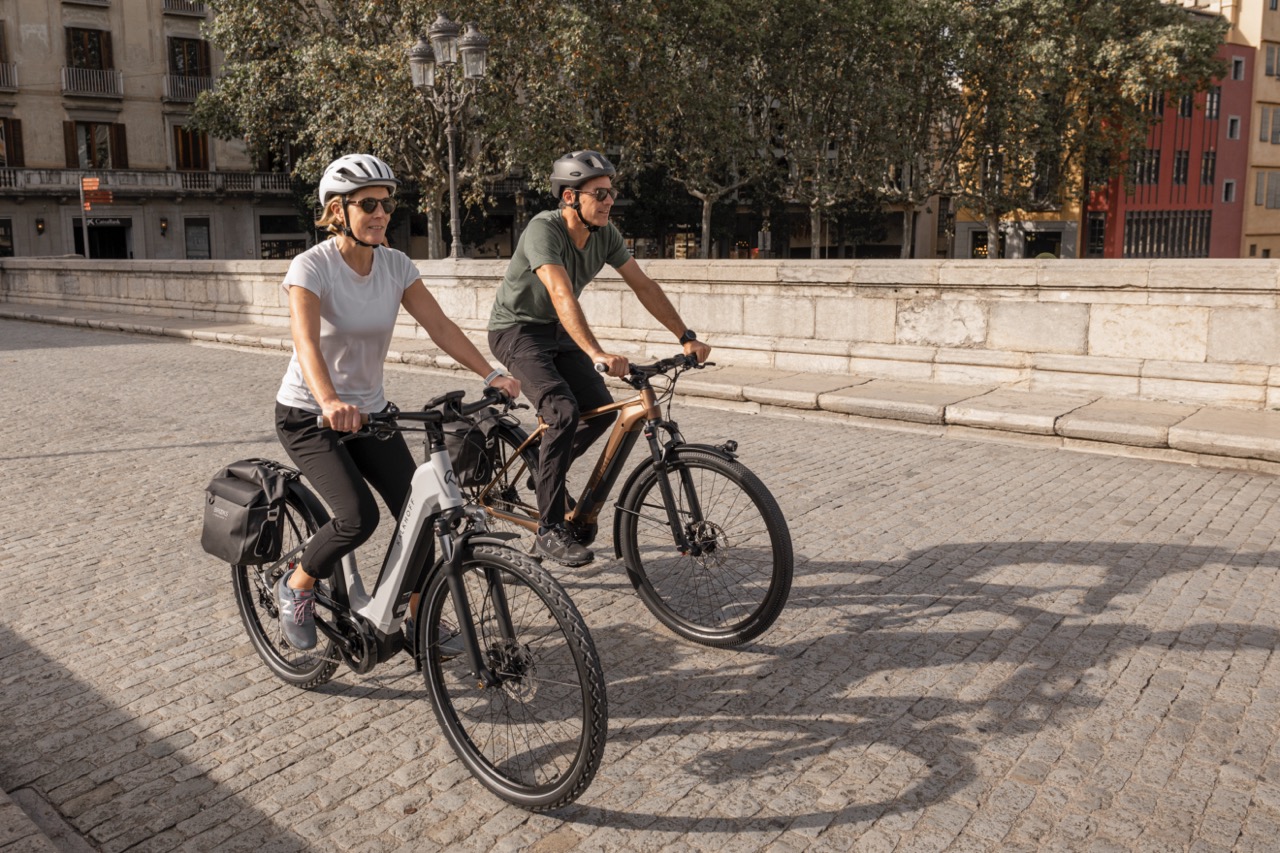
Head Position: Closely related to this mishap is an incorrect head position. The wrong seating length, whether too large or too small, can lead to neck pain radiating along the neck to the shoulder blades and back. The line of the back must be straight and continue into the head. This means that even in a sporty seating position, the head should not always be held vertically, as if looking far into the distance or upwards. It should rest relaxed on the shoulders without a kink in the cervical spine, and the elevation of the line of sight is much better achieved with the eyes—further article: Neck pain on the bike.

Pelvic Position: An unfavorable pelvis tilt can also be transmitted through the back to the shoulder girdle. If you suspect the problems stem from the seating position, you should play it safe and do a bike fitting, i.e., adjust everything from scratch. If you feel unsure about this, the Ergon Fitting Box is an excellent guide, including all the necessary tools.

Changing Grip: What helps well on the go against aching shoulders up to numbness in the neck and extremities are position changes. This applies to both the hands on the handlebars and regularly getting out of the saddle, even if only for a few seconds. Suppose your handlebars only have round bike grips without additional grip options. In that case, you can find an ergonomic grip with up to four grip positions through optional bar ends in addition to the fitting.

Looking Ahead: The mechanical load on the shoulder from rough surfaces and potholes or obstacles has already been mentioned. If possible, you should recognize and simply avoid them early. Depending on the discipline, this is not possible, or these obstacles are even part of the sport. Nevertheless, anticipatory riding remains essential to get into position in time – elbows bent, rotated outwards, arms 90 degrees to the body – and relax the muscles at the right moment. This means that, for example, when landing after a jump, you do not hold the distance to the handlebars in a cramped manner but use the arms effectively as a buffer.
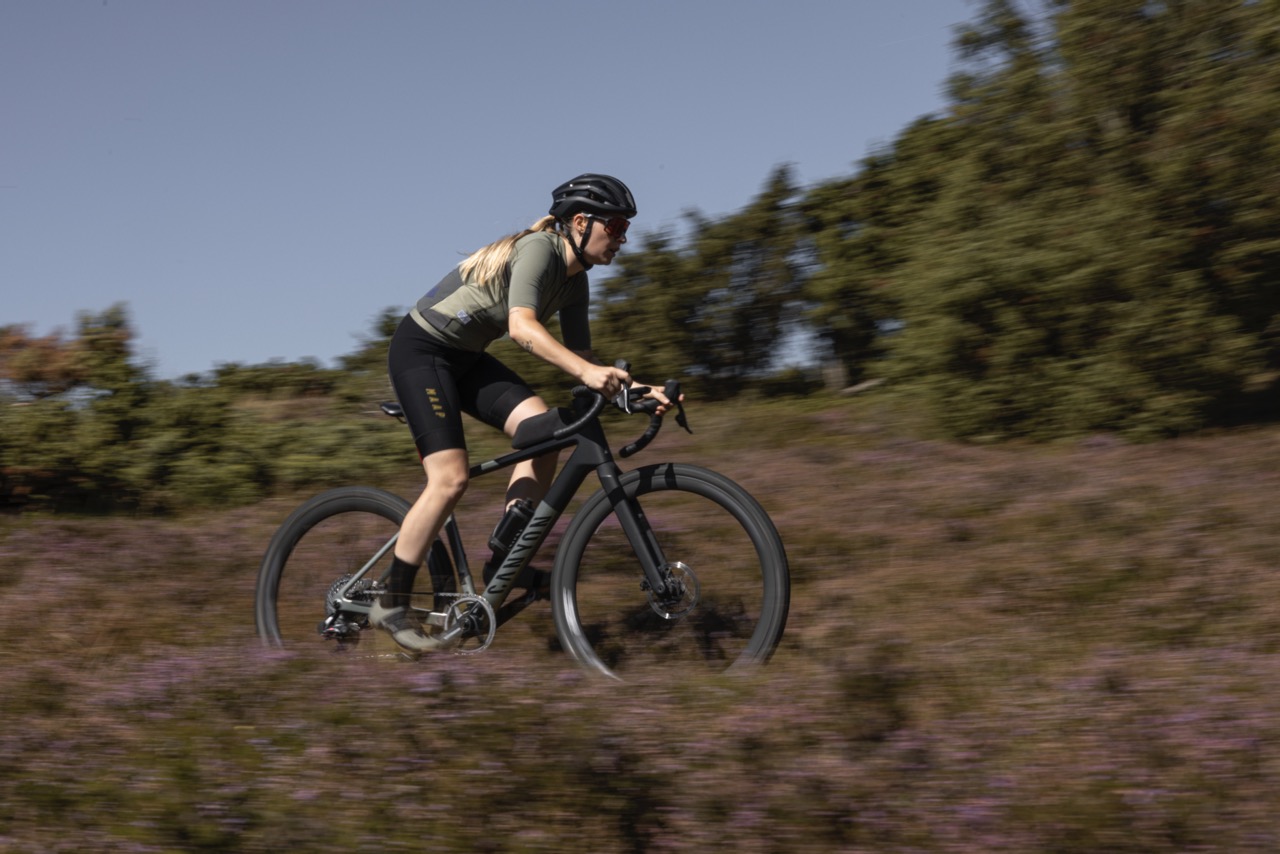
Lasten vermeiden: Fahrradrucksäcke sind beim Mountainbiken fast immer dabei. Schlecht sitzende Tragesysteme und zu viel unnötiger Ballast drücken aber auf die seitlich aufsitzenden Schultermuskeln (musculus trapezius descendens). Außerdem zwingen nicht ergonomische Rucksäcke Fahrer*innen oft in unnatürliche und ungewohnte Haltungen auf dem Fahrrad. Zu diesem umfangreichen Thema bietet Ergon hier zwei weitere Artikel zu den Themen: Rucksack richtig einstellen und Rucksack ideal packen.
Avoiding Loads: Bike backpacks are almost always present when mountain biking. However, the carrying systems are poorly fitting, and there is too much unnecessary ballast press on the shoulder muscles (musculus trapezius descendens) that sit on the side. In addition, non-ergonomic backpacks often force riders into unnatural and unfamiliar positions on the bike. Ergon offers two more articles on this extensive topic: Adjusting the backpack correctly and packing the backpack ideally.
